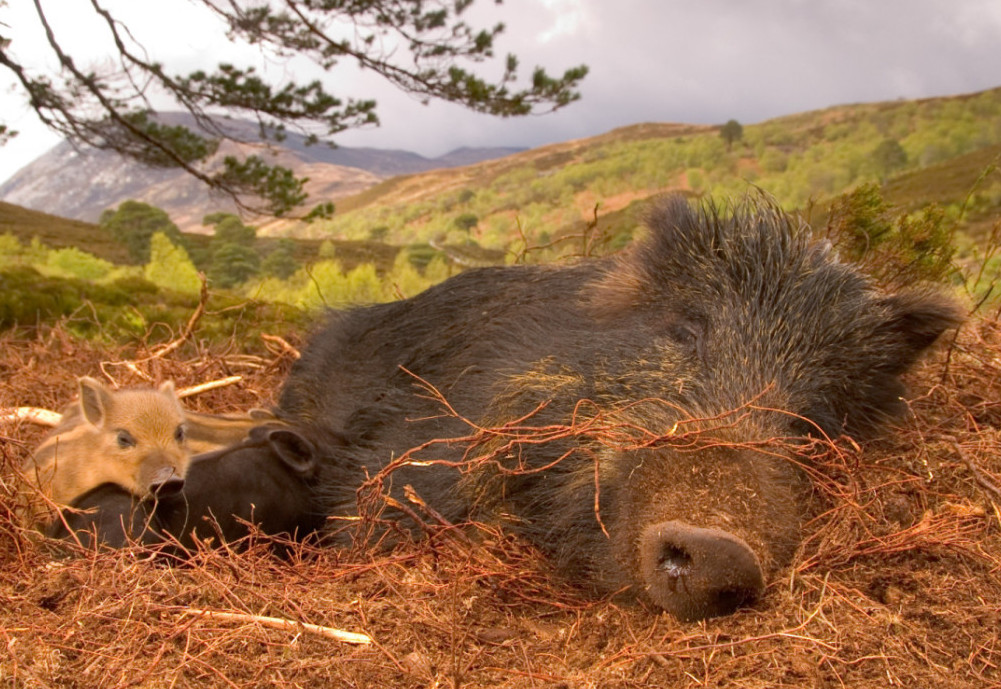Wild boar

Status
Extinct but some introduced and localised populations
Population
In the low hundreds
Scientific name
Sus scrofa
Wild boar survived in England until at least 1300, but had been hunted to extinction by the 17th century. They are still common throughout continental Europe, particularly where extensive forests exist. Adults have dark, bristly fur that is particularly thick in the winter, while the young have a lighter coat with characteristic horizontal, brown and cream stripes. Their snouts are long and tapered and the upper canine teeth of males develop into upward pointing tusks. Older boars tend to be solitary, but younger animals often live in small groups either of males or of females accompanied by offspring. Males and females only come together during the breeding season.
Wild boar forage with their sensitive snouts and can have substantial home ranges, often travelling over large distances. When food is plentiful though, they will remain in one place.
Head-body length: 100 – 170cm
Tail length: 16 – 30cm
Weight: Up to 150kg, though seasonal weight losses and gains can halve or double their weight
Lifespan: Up to 10 years
Reproduction
Mating occurs in winter and a single litter of up to 10 piglets is born in spring or early summer. They begin following their mother around after a few days.
Diet
Wild boar are largely herbivorous, eating broadleaved grasses, tubers, bulbs, seeds and fruit, but also carrion, invertebrates and small mammals.
Habitat
Deciduous woodland, but they can be found in cultivated regions if there is cover close by.
Predators
Historically wolves, but no natural predators in the UK now.
Threats
Unregulated hunting.
Status & conservation
Native, although existing populations are introduced, and localised.
Population size & distribution
England and Wales, population probably in the low hundreds. The population trend is unknown but numbers are likely to be increasing. There are three breeding populations in Dorset, Herefordshire and on the Kent/East Sussex border.
Did you know?
The wild boar is the ancestor of the domestic pig, and the two readily breed, producing offspring with the typical appearance of wild boar. Hybridization between the two makes the genetic identity of wild boar populations in Britain unclear.
